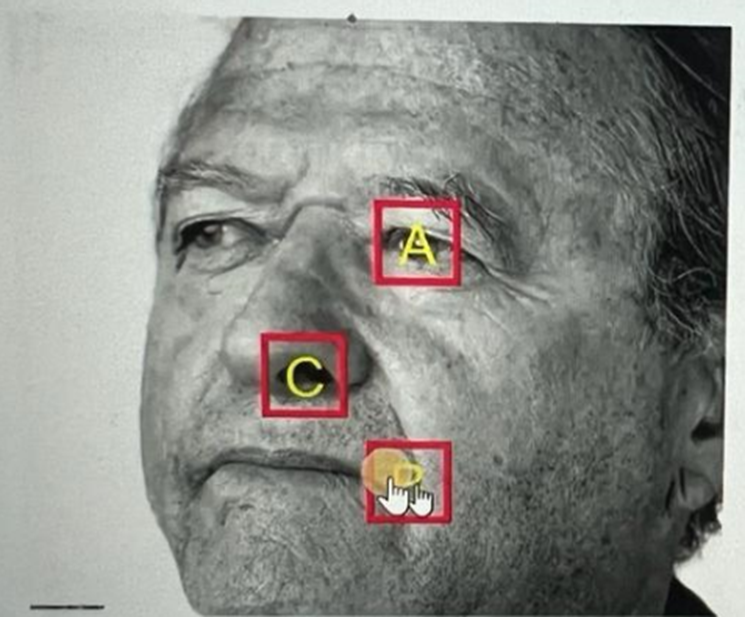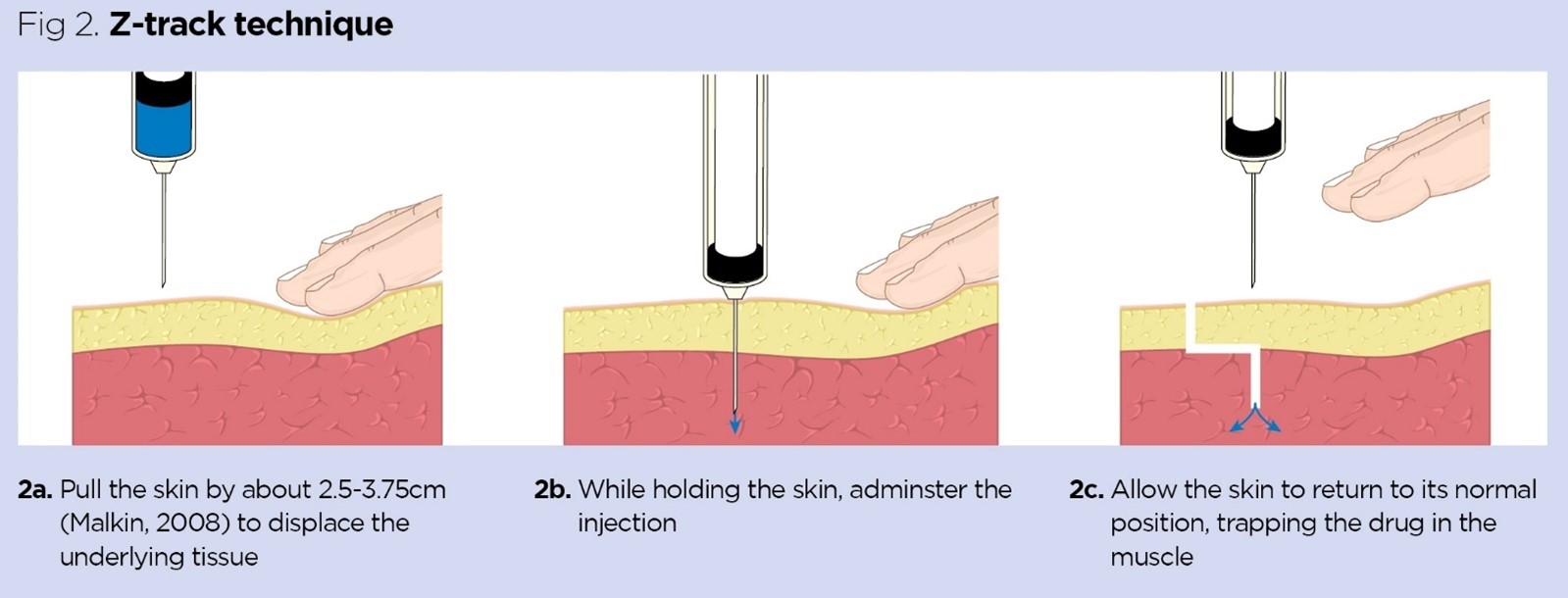A nurse is collecting data from a client who has iron deficiency anemia. Which of the following locations should the nurse monitor for the clinical manifestation of cheilosis? (You will find hot spots to select in the art work below. Select only the hotspot that corresponds to your answer.)

A
B
C
The Correct Answer is B
Choice A: The lower eyelids
The lower eyelids are not typically associated with cheilosis. Cheilosis, also known as angular cheilitis, is an inflammatory condition that affects the corners of the mouth, not the eyelids.
Choice B: The corners of the mouth
Cheilosis, also known as angular cheilitis, is an inflammatory condition that affects the corners of the mouth. It typically presents as erythema, scaling, fissuring, and ulceration. In patients with iron deficiency anemia, angular cheilitis can be a clinical manifestation. Therefore, a nurse should monitor the corners of the mouth in a client who has iron deficiency anemia for the clinical manifestation of cheilosis.
Choice C: The anterior nares
The anterior nares (nostrils) are not typically associated with cheilosis. Cheilosis, also known as angular cheilitis, is an inflammatory condition that affects the corners of the mouth, not the nostrils.
Nursing Test Bank
Naxlex Comprehensive Predictor Exams
Related Questions
Correct Answer is C,D,B,E,A
Explanation
Choice A reason: This step is typically the last in the Z-track method, ensuring that the medication does not leak from the muscle tissue.
Choice B reason: Inserting the needle into the muscle is one of the initial steps after preparing the injection site.
Choice C reason: This is the first step in the process, preparing the site to prevent infection.
Choice D reason: Pulling the skin and subcutaneous tissue laterally is done to create a zigzag path that seals the medication in the muscle.
Choice E reason: Aspiration is done to ensure the needle is not in a blood vessel, which is followed by injecting the medication.

Correct Answer is A
Explanation
Choice A reason: It is important to fast before a bronchoscopy to reduce the risk of aspiration during the procedure.
Choice B reason: While positioning may vary, the specific position is not as critical to the teaching as the fasting requirement.
Choice C reason: Monitoring vital signs is standard post procedure care but is not specific to the preprocedural teaching.
Choice D reason: Eating immediately after the procedure may not be advised due to the risk of aspiration until the gag reflex returns.
Whether you are a student looking to ace your exams or a practicing nurse seeking to enhance your expertise , our nursing education contents will empower you with the confidence and competence to make a difference in the lives of patients and become a respected leader in the healthcare field.
Visit Naxlex, invest in your future and unlock endless possibilities with our unparalleled nursing education contents today
Report Wrong Answer on the Current Question
Do you disagree with the answer? If yes, what is your expected answer? Explain.
Kindly be descriptive with the issue you are facing.
